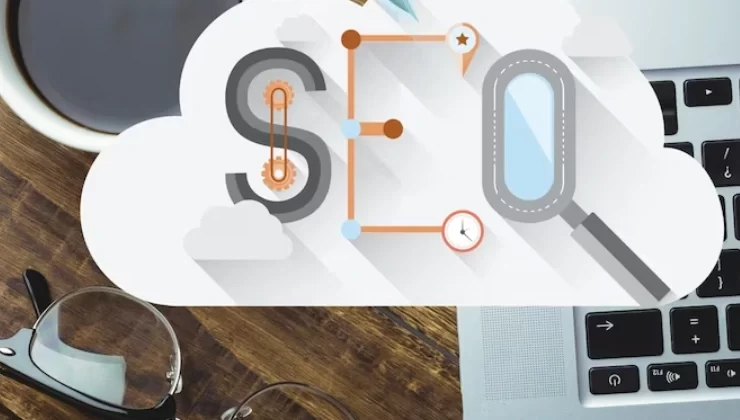
In this post, I will explain What is Mobile-First Indexing and How does Mobile-First Indexing Works.
According to a survey done in 2018, more than 3.6 billion people have been accessing the internet via their mobile phones. It’s not a surprise that China took the top spot, however, it was when India came in second place with the highest number of mobile internet users, amongst many other countries of the world.
mobile internet user
What is mobile-first indexing? As the name suggests, it implies that mobile apps get the priority for indexing. This means that Google will use the data of the mobile version of your blog for ranking and indexing. Every site has two versions, such as desktop and mobile versions. Those who view your blog on the desktop are shown the desktop version and those who visit your blog on mobile are shown the mobile version.
Mobile-first indexing signifies that Google applies the mobile version of a website’s post for ranking and indexing goals. Mobile-first indexing started around the 1st of July 2019, for every website. However, prior to its launch, Google was using the desktop version of the web page’s content for ranking and indexing. Thus, the desktop version of blogs or any content was ranked by Google search results. The mobile-first indexing was rolled out after the number of mobile users increased significantly compared to desktop users.
Google is currently using a smartphone assistant to crawl and index the websites. To explain it better, when you publish a new post on your blog, a Google bot crawls into your webpage ranking your blog accordingly, by looking into the mobile version of your website first. So your blog will be reflected in the Google search results based on its ranking. In the past, the desktop version of the website was ranked first. What if your website does not have a mobile version, will Google not index and rank your posts? It will still be ranked and indexed, however, since the mobile version is given the priority, your posts will not be given a high ranking. In order for your posts or blogs to have a good ranking in both Google and SEO, it is recommended to create a mobile-friendly app and improve mobile user’s experience.
Mobile-first indexing effect on Google indexing
Let’s say for instance that you have a responsive website, such as abc.com and m.abc.com, Google bots will crawl into the mobile version of the website first to check its contents and index them accordingly. Then it will look into the desktop version and rank the contents differently. Google’s mobile-first index search algorithm will rank websites based on the most beneficial UX they give on mobile devices. A responsive website is one that is scalable for both desktop and mobile version viewing.
Here are some of the best activities according to the Google mobile-first index update
1. Google bots crawl will give the preference to indexing on the mobile version. You should make sure that the contents of your websites are the same on both the desktop and mobile versions.
2. Check the appearance of structured data on the desktop and mobile versions of the website.
3. Ensure that titles and meta descriptions are the same on both the mobile and desktop versions.
4. Both versions should be proper rel=canonical and rel=alternate link elements.
How to make blog mobile-first indexing friendly
1. Responsive Theme
You should use a responsive theme on your blog because you can benefit a lot from it. At present, 99% of the people who blog on WordPress have nothing to fear. Why? Because WordPress themes are mobile-friendly. However, if your posts are on Blogger, then you’ll have to activate the mobile-friendly theme on your blog. It is quite simple.
reponsive theame
To make Blogger posts mobile-friendly, you’ll have to go to the Layout section of your blog and enable the mobile version on it. Many people keep the mobile version closed on the Blogger platform, you must make your theme mobile-friendly for it to be beneficial.
2. Mobile User Experience
If you want to improve the traffic and SEO of your blog with this update, then you’ll have to improve the mobile user experience of your blog. You should use the right font, nice designs, and easy navigation of your website to make the user experience better.
Mobile User Experience
The user should not have any problem surfing your website, this will have a positive effect on your blog. Google is currently paying a lot of attention to the user experience.
3. Mobile-friendly Test
If you want to check whether your blog is mobile-first indexing friendly or not, you can do a simple mobile-friendly test to determine whether it is compatible or not. Google has provided a great tool where you can test whether your blog is mobile-friendly or not. All you need to do is to copy this URL or simply click on below link: –
https://search.google.com/test/mobile-friendly.
mobile friendly testEnter your website URL in then click on Test URL
mobile friendly test 2After it will show result your website is Mobile-Friendly or Not
4. Amp version
Amp has a full form of Accelerated Mobile Pages. This is the best way to make your post-mobile-friendly, if you are blogging on WordPress then you can activate amp version in your WordPress blog. By doing this, the loading speed of your blog will increase and will load very quickly after the mobile-first indexing update. It will have a very positive effect on the SEO of your blog.
Recently, you may have seen this amp sign that is usually displayed next to the amp which is activated in mobile search results. This will greatly improve the ranking of your blog and increase mobile traffic.
FAQs About Mobile-First Indexing
1. Will this update affect your ranking and traffic?
Of course, if your blog is not mobile-friendly then your blog’s traffic and SEO will be affected and your blog ranking will go down.
2. Should we disable the desktop version?
No, you do not need to disable the desktop version. Remember that the goal is to improve and focus on user experience. If a user accesses your blog from their desktop, then they will see the desktop version. If a user accesses your blog from their mobile device, then they will see the mobile version.
3. Should I change the theme of my blog or website?
Most WordPress themes are already mobile-friendly, so if your blog or website is on WordPress then you do not need to make any changes. However, if you are not using WordPress or if your blog was deemed to be not mobile-friendly, then you will need to change your theme.
4. Is this update applicable for the English language blog only?
No, this update applies to all blogs and websites, whether in Hindi, English, or any other languages.
5. Will this update provide an SEO boost?
Yes, if your blog is completely mobile-friendly and promotes a very good user experience, then your blog will have positive effects on Google ranking and SEO.












